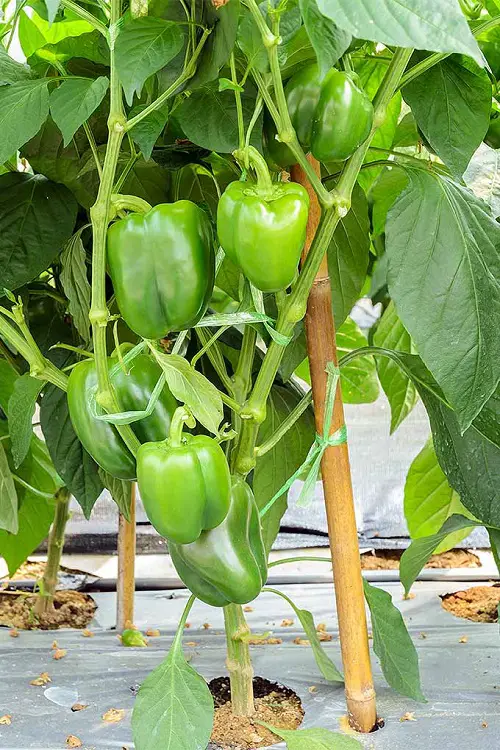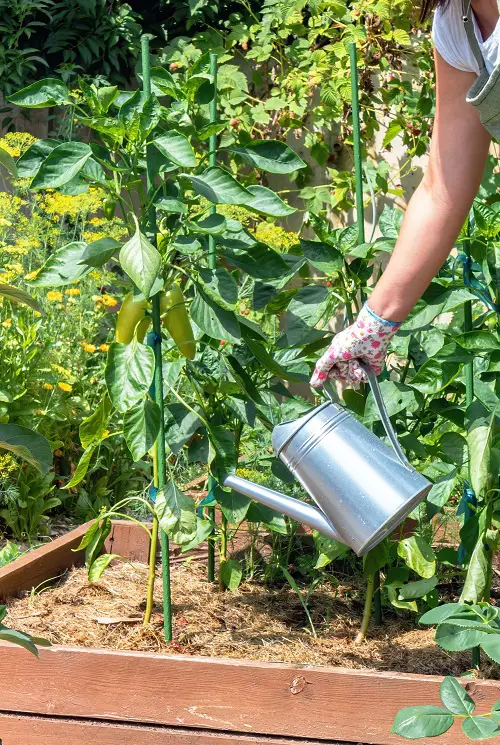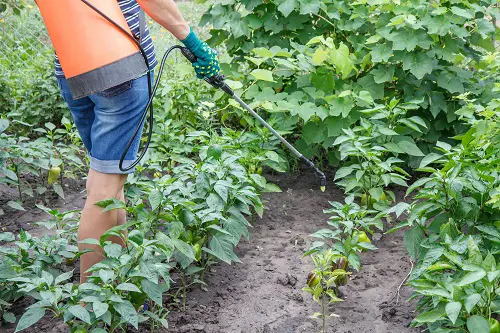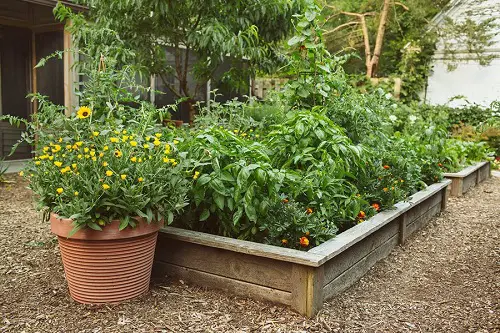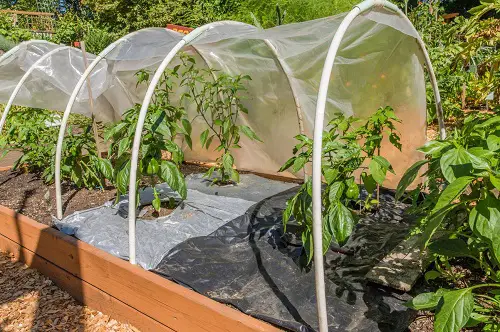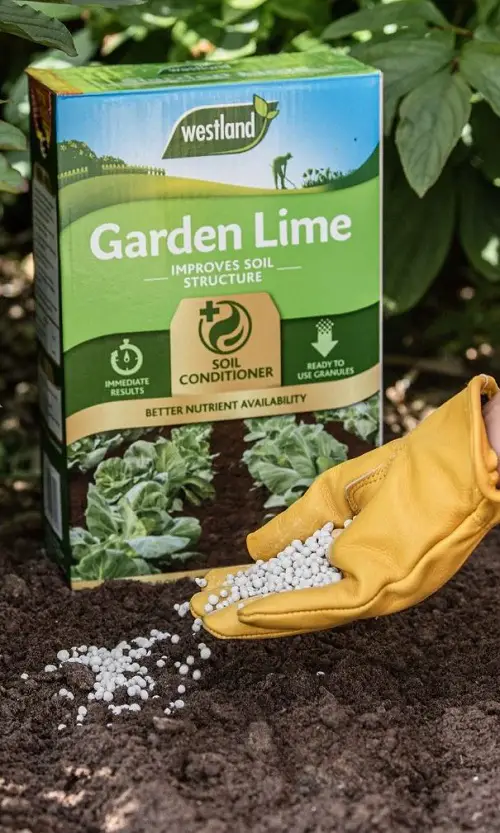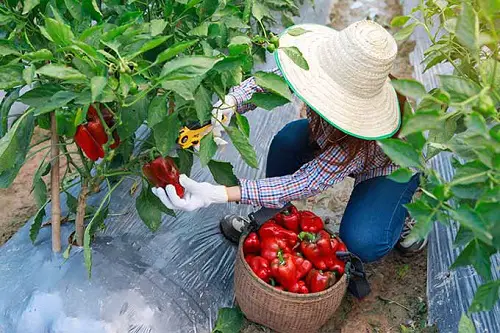Our Tips to Grow Tastiest Bell Peppers Ever are a must if you want a scrumptious harvest. Do try out numbers 2 and 3!
Bell peppers are famous for their tasty flavor, and they make every dish or salad better. Growing them isn’t hard anyway, but with these tips to grow the tastiest bell peppers ever, it’ll be a piece of cake.
Pro Tips to Grow Tastiest Bell Peppers Ever
1. Go for the Heirloom Varieties
If you already have a pepper plant ready and thriving, you can skip this, but if you’re just starting out, pay attention. The variety of bell peppers matters and can make all the difference.
Heirloom varieties are known for their flavor and spiciness, which sets them apart from others. Look online or in the local nurseries to see if you can find heirloom peppers.
Some of the best ones are California Wonder, Purple Beauty, Chocolate Beauty, Yankee Bell, and Italy’s famous Quadrato d’Asti Giallo.
2. Slightly Stress Out the Pepper Plant
Stressing the plant enhances the flavor compounds—it is a widely used method by gardeners and farmers to produce more tasteful and robust peppers.
You can reduce the watering frequency by moistening the soil only when the top inch goes dry to about 3 inches – do this every 3rd water cycle.
Another way to do it is to expose the plant to the afternoon sun for about 30 minutes to 1 hour (Do not do this for more than the advised time window, as it may promote sunscalding)—this will boost the production of capsaicin, the compound that gives peppers their signature heat.
Note that it is important not to overdo these techniques, as they can stress the plant, leading to poor health and reduced yields.
3. Try Epsom Salt Spray
Epsom Salt is Magnesium Sulfate – an important nutrient that helps plants absorb essential minerals and Magnesium.
Take a tablespoon of Epsom Salt and add it to the planting hole before growing bell peppers. But if that ship has sailed, you can always dissolve a spoon of it in a gallon of water and use it to water the plants during the growing season (late spring or early summer).
It aids in the plant’s overall photosynthesis process, helps develop chlorophyll, and enhances the creation of sugars and oils in pepper plants, enhancing their overall flavor profile.
Epsom salt does more than increase the plant’s flavor; we have a great article on it here.
4. Use a Fish Emulsion Fertilizer
Another great remedy for flavorful bell peppers is a fertilizer made with fish emulsion. These are rich in nitrogen and phosphorus. 2 things that can help boost the size and shape of your bell peppers. So how do you feed it?
Get a good quality fish emulsion fertilizer and dilute it with water to 1/5 of its strength. Once you have it ready, water your plants with it for 2-4 weeks. But use this only during the growing season.
5. Try Companion Planting
People often know what companion planting is, but they skip it. But don’t be like those people! Many wonderful companion plants will attract beneficial insects near bell peppers and improve soil health.
Plant Basil, Cilantro, Oregano, Marigold, or Thyme near your bell pepper plants for the best results!
6. Use Shade Cloth in Hot Climates
This one’s a winner if you live in a place where there’s excessive heat. That much sun is not good for bell peppers at all, so you need to get a shade cloth.
Put it over your plants during the harsh afternoon hours so it doesn’t get sunburned. The shade will provide a cooler microclimate for them, and your peppers will thank you with rich flavors.
7. Alter the pH of the Soil
Peppers grow best when the soil has a pH level between 6.0 to 6.8. This pH leans a bit to the acidic side of the neutral pH range but is essential so the plant absorbs nutrients and develops a proper flavor profile.
Check your soil’s pH with this simple test. If the pH levels are lower than what bell peppers need, add lime to the soil to neutralize the acidity. You can also use sulfur or wood ash to get the same results.
8. Treat with Coffee Grounds
Coffee grounds are full of varying levels of nitrogen, phosphorus, and potassium. Plus, they also have many beneficial micronutrients. So mix 1-2 teaspoons of these into the soil once in 2-3 months.
They’ll break down slowly and release all the nutrients into the soil so the bell peppers can soak them up and develop a wonderful flavor.
The NO: 1 Tip to Grow Tastiest Bell Peppers Ever
Harvesting! Believe it or not, harvesting is the number 1 tip for flavorful bell peppers. If you pick them blindly, chances are, you’re getting bad ones that are not ripe or maybe even ones that should have been harvested a few days ago.
How do you know the difference and pick them at the right time? Look at their size and feel their firmness with your hands. Leave the small, underdeveloped ones so they can grow properly and develop the flavor.
TLDR: If you like sweeter peppers, start harvesting when they reach their full size and color. However, if you prefer slightly milder and immature peppers, harvest them when they are green.


